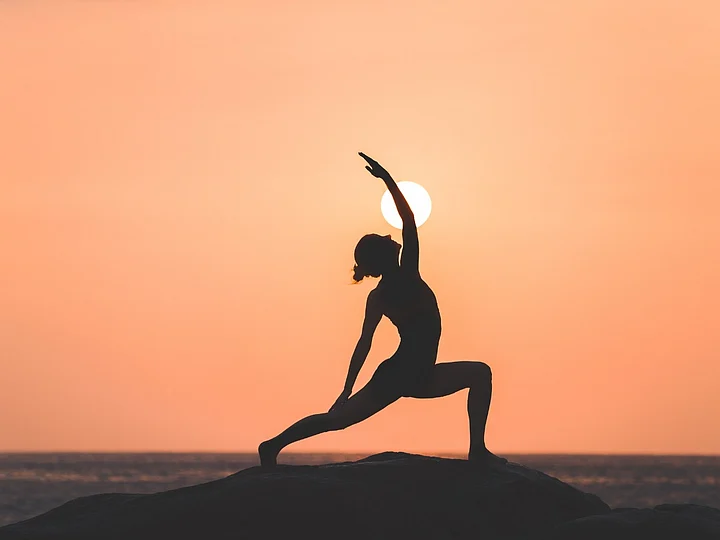It is very important to have healthy gut and besides mindful eating, yoga can also help you attain healthy gut. You need to identify the food items that cause digestive issues. Yoga has a positive impact on digestion and gut health since it helps to stretch the muscles, massage the internal organs and stimulate the digestive system.
The digestive system will also get fast relief from the digestive issues. The more natural remedies you have, the less side effect on digestion and more helpful it can prove to be . Yoga can help with the gentle movement as well.
1. Cat Cow Pose
This yoga pose focuses on various muscle groups like erector spinae, rectus abdominis, triceps, serratus anterior, and gluteus maximus.
You can follow these steps:
Go on all fours.
Your wrists go underneath your shoulders, and your knees will be placed underneath your hips.
Make sure you balance your weight evenly on all fours.
Breathe in and look up, let your stomach drop down toward the mat.
Breathe out and tuck your chin into your chest, draw your navel toward your spine, and your spine should be arched towards the ceiling.
Maintain focus while you practice this pose.
Focus on releasing the tension in your body.
Hold the pose for at least one minute.
2. Cobra Pose
This stretches your abdomen, chest, and shoulders. It strengthens your spine and may soothe sciatica. It helps the muscle groups: hamstrings, gluteus maximus, deltoids, triceps, and serratus anterior. It also helps manage stress.
Follow the steps:
Lie on your stomach and place your hands under your shoulders with your fingers facing forward.
Draw your arms to your chest, and your elbows should not go out to the side.
Press into your hands and slowly lift your head, chest, and shoulders.
Lift part way, halfway, or all the way up.
Slightly bend your elbows.
Let your head drop back to deepen the pose.
Release back down to your mat and breathe out.
Bring your arms by your side and rest your head.
Slowly move your hips from side to side to release tension.
3. Bow Pose
This is an easy and quite effective pose that strengthens the abdominal muscles. According to the Yoga Institute, it puts pressure on the abdominal portion and helps in detoxifying. It is an advanced pose; so do not push your body too hard.
Lie flat on the stomach, use a soft surface or a yoga mat.
Bend your knees slowly.
Slowly extend your arms backward and try to clasp the ankles.
Now, gently raise your chest off the floor as far as you can go.
While using the tension between the arms and legs, lift the thighs and upper body off the floor.
Hold the pose for a few seconds, then release.
4. Corpse Pose
This is a traditional resting pose and helps relax the entire body without putting pressure on any specific muscle groups. It helps calm the central nervous system, aiding the digestive and immune systems. It might also help manage blood pressure and frequent headaches.
Lie down on your back and open up your arms and legs. Then turn your palms upward.
After you get into this position, relax your whole body and face. Don't try to hold your position; try to feel heavy instead.
Try breathing naturally.
Try staying in this position for as long as you are comfortable.
When you want to come out of the pose, deepen your breath, then start to wiggle your fingers and toes to reawaken your body.
Make sure to do a full-body stretch from hands to feet.
Close your eyes and bring your knees to your chest and roll over to one side. Rest in the foetal position for a few breaths.
Return to a sitting position with the help of your hands.
5. Camel Pose
The camel pose helps the front body stretch out and the parts involved include the chest, abdomen, and quadriceps. It helps flush out toxins from the body. Practice the pose like this:
Bend forwards to your knees and place your legs hip-width apart. Keep your hips over your knees, squeeze your thighs toward each other, and inhale while you engage your belly. Then reach your tailbone toward your knees and create a space between your lower vertebrae.
Inhale again while you lift your sternum and draw your elbows back, toward each other, behind you. Let the ribcage expand. The chest should be raised, the core engaged, and the chin tucked in. Press the heels of your hands into the heels of your feet while you drape your fingers over the soles. Lift your shoulders and let the trapezius muscles between the shoulder blades rise up and cushion the cervical spine. Extend the head and neck backward.
(At The Quint, we question everything. Play an active role in shaping our journalism by becoming a member today.)
